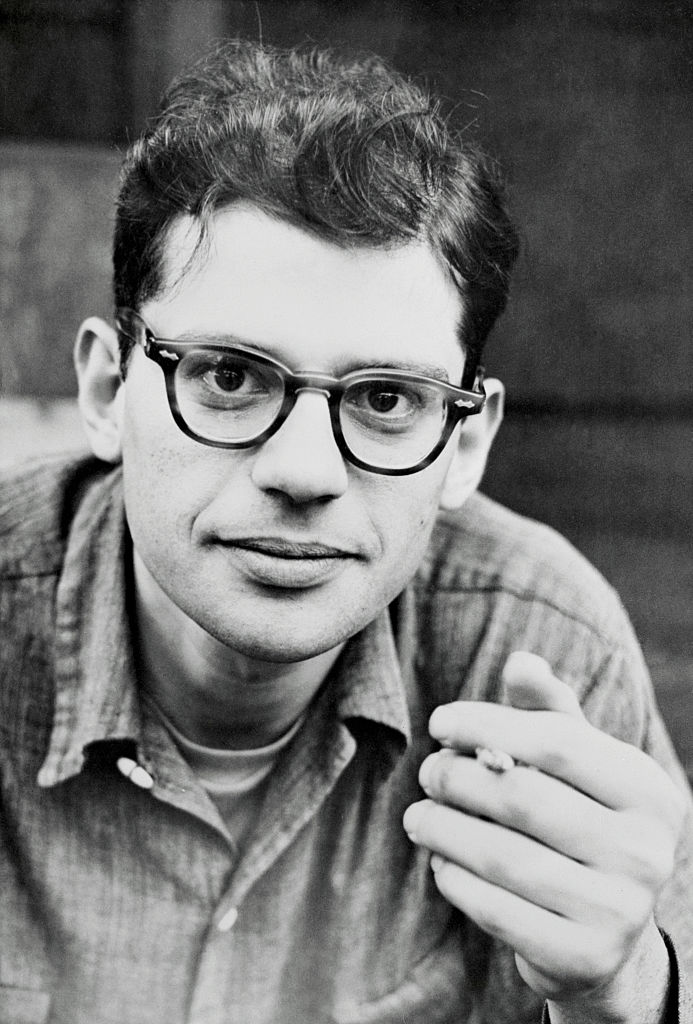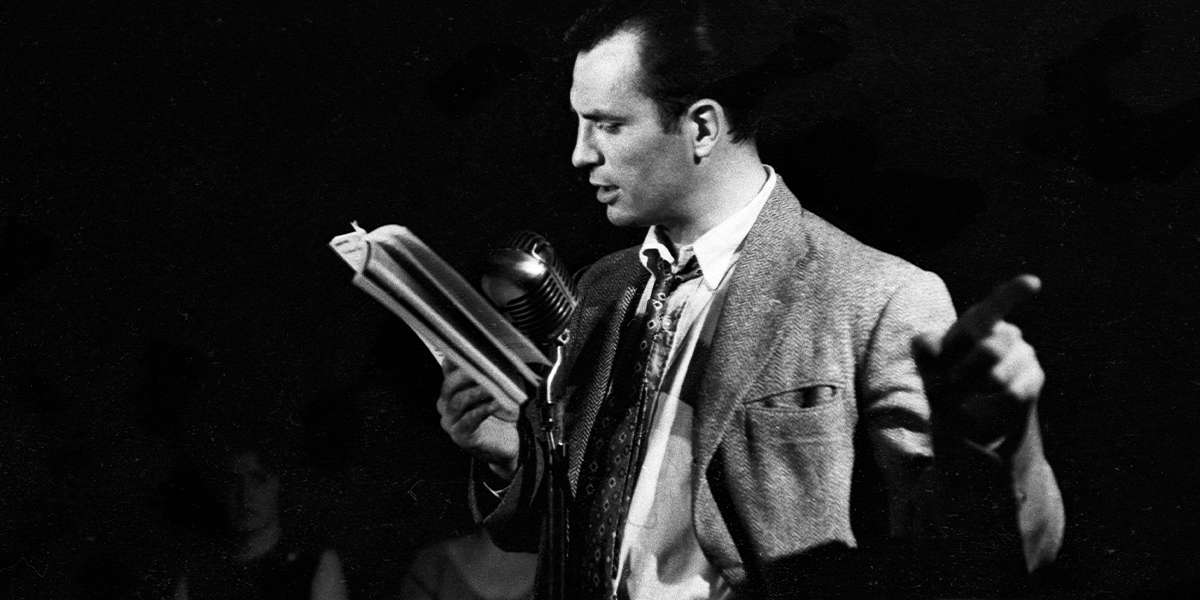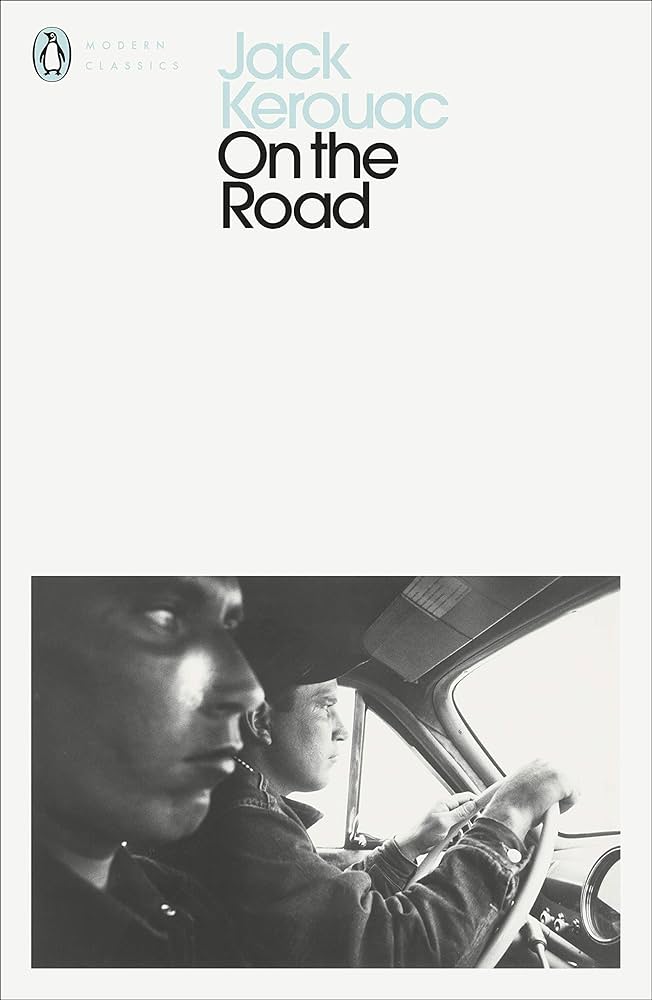America in the 1950s. During this post-war era of materialism and conformity, a sense of disillusionment developed; a desire to reject the status quo, to separate oneself from conventional society in search of something greater.
Three friends were at the centre of this shift: Jack Kerouac, William S. Burroughs, and Allen Ginsberg.
The writers set out to create and capture a sense of authentic experience through their work. In so doing, they incidentally pioneered the literary and social Beat movement, which celebrated spontaneity, and inspired the framework for the GR05 Graham Cutler Collection optical.
‘On The Road’ by Jack Kerouac was one of the first novels to be associated with the movement, and it has left an indelible mark on history. Here, we explore the origins of the narrative.
Adventures Across America
Kerouac’s legendary work, written in 1951 and published in 1957, follows war veteran and aspiring writer Sal Paradise as he embarks on a series of road trips across America in search of adventure. Along the way, he travels with his charismatic, womanising friend Dean Moriarty, and together they stumble in and out of love and labouring jobs.

The semi-autobiographical work was inspired by adventures Kerouac took with his friend Neal Cassady (the inspiration behind Moriarty). Living pay cheque to pay cheque, Sal Paradise empties his bank account for beers, bus tickets, and Benzedrine. Among the cigarette stubs and word-worn pencils, Kerouac provides a sweeping view of the great American West.
Kerouac’s portrayal of a restless, highway-hopping protagonist captured the zeitgeist. Written during a time of post-war flux, it spoke to a generation’s search for identity and fulfilment.

A Frenzied Process
‘On The Road’ is written in immersive, grammar-shirking sentences that create a sense of ecstatic wanderlust. Kerouac wrote the original draft in a 3-week frenzy, taping together pieces of paper to create a 120ft scroll, which he fed into his typewriter. No paragraphs or breaks.
In a 1968 interview with The Paris Review, Kerouac revealed that this spontaneous style of writing was inspired by a letter once written to him by Neal Cassady; he wrote the 40-pager over 3 days, high on Benzedrine. Kerouac described it as “a whole short novel” that was “the greatest piece of writing I ever saw, better’n anybody in America”.

Once he’d finished typing, a drunk Kerouac reportedly turned up at his publisher’s office and dramatically unfurled the scroll across the desk, proclaiming that there would be “no edits on this manuscript”. Like his Beat contemporaries, Kerouac insisted that revisions and edits diminished the authentic experience and immediacy of the piece.
The Response
‘On The Road’ received mixed reviews when it was first published; American novelist Truman Capote dismissed it, stating, “That’s not writing, that’s typing”. However, Kerouac’s effect was monumental, disrupting traditional prose and kick-starting the free-thinking Beat movement.
Along with the likes of James Dean and Marlon Brando, Kerouac’s adventuring characters helped popularise the white-tee-and-denim workwear uniform – a style that remains as relevant today as ever.

The Rise and Fall
Through his work, Kerouac became the spokesman for a generation – a position he neither coveted nor liked. Coinciding with the emergence of talk shows, the shy writer was thrust into the limelight.
He resented any connection made between himself and the Beatniks, a derogatory label used to refer to beret-wearing, jazz-listening hipsters. Kerouac and his Beat contemporaries were searching for real authenticity and self-expression.
In 1969, aged 47, an alcoholic Kerouac died from internal haemorrhaging following a bar fight. A tragic end to a literary legend whose words are imprinted in the cultural ether.
The Graham Cutler Collection
Gathered around tables at poetry readings and literary recitals, the Beat writers were often photographed cigarette in hand, wearing slim black acetate glasses; this formed the starting point for the GR05 Graham Cutler optical.
The latest collection of Graham Cutler glasses and sunglasses distils our distinctive silhouettes into slighter, lighter proportions. Explore the collection now.




